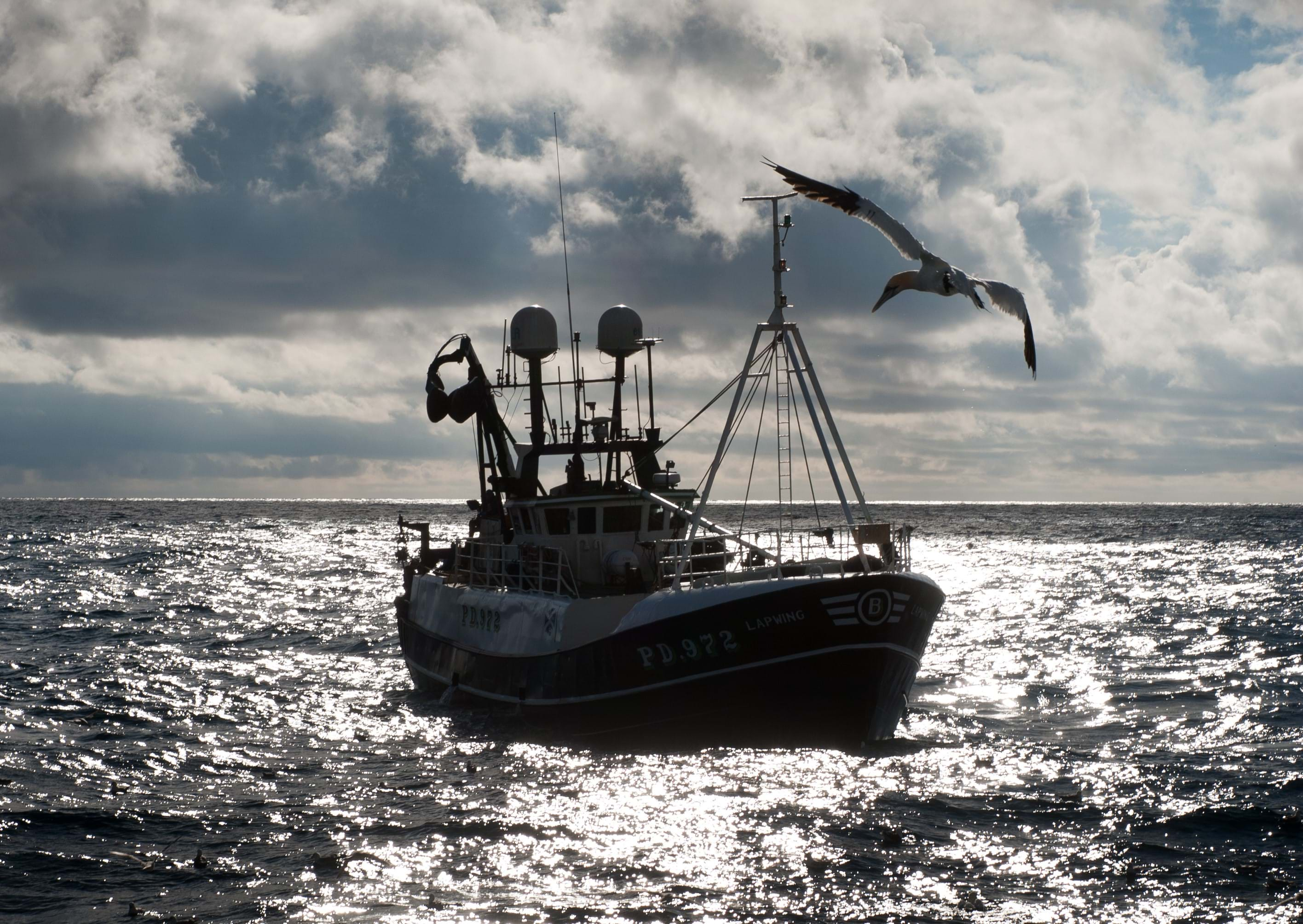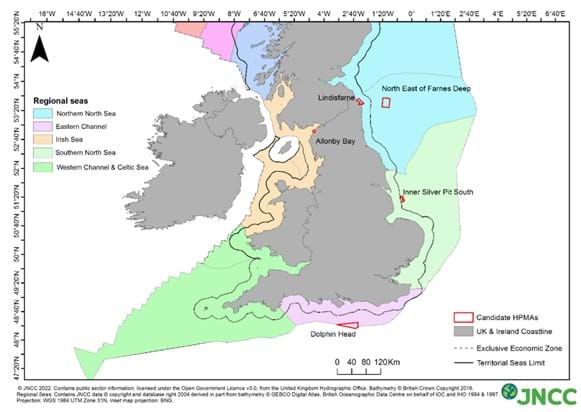What happens when you add ‘Highly’ to Marine Protected Areas?
Most of us are already familiar with Marine Protected Areas (MPAs). They have been around for some time, cover almost a quarter of UK waters and have a diverse range of conservation goals.
The marine landscape is set to change with the introduction of new Highly Protected Marine Areas (HPMAs) next year. When they come into force, HPMAs will impose further restrictions in waters around the UK.
A Defra consultation on candidate sites for HMPAs draws to a close this week. So, this feels like an appropriate time to reflect on the potential impacts they could bring. But first, let’s look at what HMPAs are and how they have come about.

These sites are a form of MPA that use a whole site approach to protect biodiversity. The higher conservation objectives of HPMAs mean that if designated, all forms of fishing will be prevented within site boundaries.
They are being proposed as a way of further protecting the marine environment. By setting aside areas with high levels of protection, nature is expected to recover to a more natural state, allowing the ecosystem to thrive.
In 2019 the UK Government commissioned Lord Benyon to review the need for HPMAs. The Benyon Review concluded that the substantial benefits provided by HPMAs would justify the negative effects associated with their designation. The government have subsequently committed to designating several pilot HPMAs.
How have potential sites for HPMAs been identified?
The Defra consultation is seeking views on 5 candidate HPMA sites in English waters.
Due to a lack of data, it is not possible to select sites purely on a quantified cost-benefit basis. Instead, a qualitative approach has been adopted. This involves prioritising based on ecological criteria and then balancing this with economic risk.
Candidate sites were identified by Natural England (NE) and the Joint Nature Conservation Committee (JNCC) on the basis of three ecological criteria:
- Ecological importance (e.g. high levels of biodiversity, multiple species and/or habitats of importance, supports key life stages such as spawning or nursery areas).
- Naturalness, sensitivity and ability to recover (e.g. represents a natural system or a relatively degraded system)
- Ecosystem services (e.g. habitats important for carbon storage, flood or erosion protection, or supports key life stages).
Locations that were already licenced for certain activities – for example renewable energy, aggregate dredging or dumping, and aquaculture – were then specifically excluded from consideration.
NE and JNCC submitted 30 sites to Defra for consideration. Following an assessment of the socio-economic impacts of these proposals, 5 sites were chosen as candidate HPMAs:
- Allonby Bay in the Irish Sea
- Dolphin Head in the English Channel
- Inner Silver Pit South in the North Sea
- North East of Farnes Deep in the North Sea
- Lindisfarne in the North Sea
The locations of sites are shown in the map below:

What does this mean for the fishing industry?
Spatial or marine squeeze has become a very real issue. Fishing restrictions associated with nature conservation and offshore renewable development are expected to continue to increase in order to meet various Government environmental commitments.
The fishing industry is concerned about the impacts these changes will bring. The National Federation of Fishermen’s Organisations (NFFO) and the Scottish Fishermen’s Federation (SFF) contracted marine consultants ABPmer to develop a better understanding of spatial pressures on fisheries. Their report indicates that by 2030, a third of UK waters could no longer be fished with mobile gear. It also stated that by 2050 this could be as much as a half. This will have significant implications for the future viability of the industry.
Because fishing grounds are not clearly identified or delineated, it’s difficult to determine the true impact of candidate HPMA designations on the local fishing industry and associated coastal communities. Defra have undertaken the socio-economic impact assessment at a broad scale for each site. They have concluded that the UK vessels impacted will usually be able to move to alternative grounds.
Further detail of the expected impacts on local fishing businesses was provided in online meetings. This is summarised in the table below:
| Candidate HPMA | Number UK vessels using area between 2017 and 2019. | Gears and target species | Estimated first landed value affected |
|
Allonby Bay (Irish Sea) |
Very few vessels use the site. | Mainly dredge or bottom trawls for brown shrimp and king scallop using. Some potting for lobster, edible crab and whelk. |
Estimate 80% of vessel revenue comes from site for several small vessels. Categorised as a low economic risk as few vessels use the site. |
| Dolphin Head (English Channel) | 53 large vessels | Mostly whelk, horse mackerel, mullet, king scallop, herring or squid are harvested using dredges, midwater trawls, Scottish seine or pots. |
£100,000 Estimate that <1% of vessel revenue obtained from site. Categorised as a high economic risk due to high level of non-UK fishing in the site. |
| Inner Silver Pit South (North Sea) | 23 large vessels and 53 small vessels | Mainly harvesting edible crab, lobster, king scallop, velvet crab, brown shrimps, cockles, or whelk using pots or dredges. |
£5.3M Estimate 75-80% vessel revenue obtained from site. Categorised as a high economic risk due to high level of UK fishing in the site. |
| North East of Farnes Deep (North Sea) | 45 large vessels | Mainly pelagic vessels targeting haddock, plaice or whiting, and some scallop dredging. |
£10,000 Estimate that <1% of vessel revenue obtained from site. No economic risk categorisation provided in Impact Assessment. |
| Lindisfarne (North Sea) | 56 large vessels and 40 small vessels | Large vessels harvesting Norway lobster, squid, or turbot using dredges or bottom trawls. Smaller vessels harvest lobster, edible crab, or velvet crab using pots, longlines, or bottom trawls. |
£3.5M Estimate that >80% of vessel revenue obtained from site. Categorised as a medium economic risk due to high number of UK vessels and proportion of vessel revenue from site. |
Why is Defra consulting on the proposed sites?
The socio-economic assessment does not consider the negative impacts or the unintended consequences of the expected vessel displacements. These can include increased pressure on stocks, or damage to habitat and potential increased bycatch of sensitive species, as well competition with the fishers already using the area to which the displaced vessels move.
Defra need better evidence in order to improve their socio-economic impact assessment for these candidate HPMAs. They are keen to understand the finer scale impacts of the proposals, particularly at the individual vessel level.
Defra want to hear from anyone who may be affected by the designations of the candidate HPMAs. They would welcome submissions on the ability or inability of the fishing fleet to be displaced and the impacts of displacement for the fleet. Any fisher affected by any of the candidate HPMAs can respond to the consultation, providing evidence of impact.
What happens next?
The Defra consultation closes on Wednesday 28 September. If the Defra socio-economic impact assessment is found to be inaccurate, then inappropriate designation decisions could be made by ministers.
A decision on which of the candidate HPMAs to designate will be made by ministers and implemented by 6 July 2023.
Find out more
Further information on the public consultation on HMPAs is available from the link below:
The Benyon Review into HPMAs is available from the link below:
You can read the advice from JNCC and NE to Defra on areas of ecological interest for HPMAs from the link below:
You can read ABPmer report on issues surrounding future spatial pressures on fisheries produced for NFFO and SFF from the link below:
You can find more information on MPAs, including an in-depth guide, from the link below:
If you have further queries about HPMAs or our marine regulation work, please contact me on Eunice.pinn@seafish.co.uk